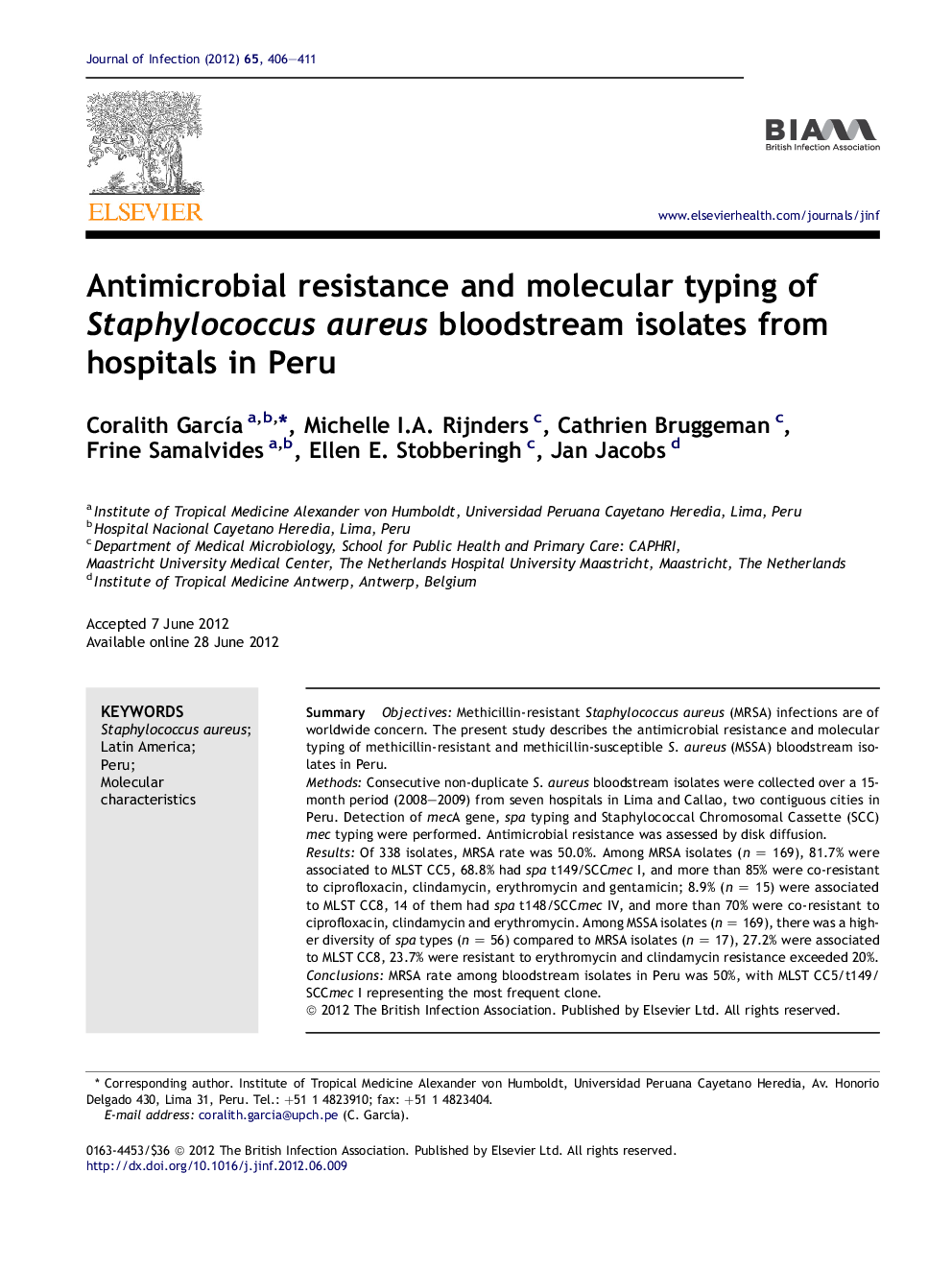| Article ID | Journal | Published Year | Pages | File Type |
|---|---|---|---|---|
| 3374666 | Journal of Infection | 2012 | 6 Pages |
SummaryObjectivesMethicillin-resistant Staphylococcus aureus (MRSA) infections are of worldwide concern. The present study describes the antimicrobial resistance and molecular typing of methicillin-resistant and methicillin-susceptible S. aureus (MSSA) bloodstream isolates in Peru.MethodsConsecutive non-duplicate S. aureus bloodstream isolates were collected over a 15-month period (2008–2009) from seven hospitals in Lima and Callao, two contiguous cities in Peru. Detection of mecA gene, spa typing and Staphylococcal Chromosomal Cassette (SCC)mec typing were performed. Antimicrobial resistance was assessed by disk diffusion.ResultsOf 338 isolates, MRSA rate was 50.0%. Among MRSA isolates (n = 169), 81.7% were associated to MLST CC5, 68.8% had spa t149/SCCmec I, and more than 85% were co-resistant to ciprofloxacin, clindamycin, erythromycin and gentamicin; 8.9% (n = 15) were associated to MLST CC8, 14 of them had spa t148/SCCmec IV, and more than 70% were co-resistant to ciprofloxacin, clindamycin and erythromycin. Among MSSA isolates (n = 169), there was a higher diversity of spa types (n = 56) compared to MRSA isolates (n = 17), 27.2% were associated to MLST CC8, 23.7% were resistant to erythromycin and clindamycin resistance exceeded 20%.ConclusionsMRSA rate among bloodstream isolates in Peru was 50%, with MLST CC5/t149/SCCmec I representing the most frequent clone.
